LOTHAL FACTS & FIGURES
| Best time to visit | Winters | | Languages | Gujarati, Hindi, & English |
| |
INTRODUCTION
The 4,500-year-old city of Lothal was discovered in 1954. Dating back to the second millennium b.c., Lothal was an important port on the Indian subcontinent during the Harappan era. Lothal is an important archeological site due to its scientific layout and a massive dockyard that facilitated trade with other civilizations of the time.

In the background of the valley, at 12,900 feet, is the Lari Bank glacier. Beyond lie perennial snowfields. The sparkling, snow-fed Pushpawati Ganga (River of Flowers) which runs through the entire length of the six-mile long, one and a half mile wide valley. From mid-July till the end of August, the valley with its dazzling assembly of flowers plays host >to gorgeous butterflies and dainty flying creatures by day and to millions of glow worms by night. Through the sunny hours, the flowers lean over gracefully to soften the edges of tiny melt water streams which cut through the valley while beyond, against a background of dark purple clouds, the mountains stand more exquisite than ever. In the last hour, before daylight dies, the gray mist steals in over the valley from the glacier end, while the mountains around are aglow, suffused with magic light. The dusk shuts out the flowers. Then, goes the local legend, the fairy folk with millions of glowworm lamps hover over the flowers, tending them.
LOCATION
Lothal is located in the western Indian state of Gujarat, about 85 km southwest of Ahmedabad. It was on the banks of the mythical river Saraswati, which has since dried up.
HISTORY
Lothal was discovered after India had to give up the sites of Harappa and Mohenjodaro to Pakistan during the partition in 1947. A flourishing and prosperous city during the Harappan era, its culture can be divided into two phases. The remains dating from 2440 to 1900 b.c. are of a mature and thriving Harappan culture while those belonging from 1900 to 1600 b.c. represent the late Harappan culture in its state of decline.
As in the other cities of the Indus Valley Civilization, Lothal too had excellent architecture and town planning. Excavations have revealed a town neatly divided into two parts. The upper part or the acropolis was where the ruler and other important people of the city lived while the lower part was meant for the common folks. The entire city had a scientific drainage system, well laid-out, paved roads and a bath for every house, some of which were double storied and built on mud platforms.
The most architecturally sophisticated part of Lothal was its dockyard, which provided berthing facilities for the ships. Constructed from kiln-fired bricks, the dock comprised a basin 214 meters long, 36 meters wide, and 13 meters deep. A 13-meter wide channel on the northern side was included to facilitate entry of ships. Near the dock were warehouses for storage of cargo brought in by the ships.
Lothal was an active business center and had business links with Mesopotamia, Egypt and Persia. Beads made in the city were quite famous and there is evidence of a bead factory in Lothal. Pottery was another flourishing industry. The ruins of a fire altar suggest that the people of Lothal worshipped the fire god along with the sea god.
The unique Harappan system of weights and measures was used in Lothal too. Bricks were in a perfect ratio of 100×50×25, and the decimal system was used for measuring width.
TOURISTS ATTRACTIONS

The major attractions in Lothal are the vast ruins of the ancient city. The most important are the sites of the ancient dockyard, the acropolis, the lower town, the bead factory, the warehouses, and the drainage system.
An archeological museum to the west of the ruins houses the objects found from the sites like mirrors of bronze and copper, perforated and painted potteries, toy bullock carts, beads, jewelry and a variety of objects made from stone, chert, shell, and bone. The museum also displays seals from Bahrain, terracotta figures from Sumeria, and objects from Egypt. Also on display in the museum is a plaster of Paris model of the city based on reconstructions made by archeologists.
PLACES AROUND LOTHAL
Five kilometers from Lothal is the Utelia Palace, built around the turn of the century by Neknamdar Thakore Saheb Sur Sinhji. The palace features five domes, pillared galleries, balconies and porticoes and is a typical example of the Indo-Saracenic architectural style. It has a beautiful view of the surrounding village and the Bhogavo River.
FACTS & FIGURES
| Best time to visit | Winters | | Languages | Gujarati, Hindi, & English |
| |
INTRODUCTION
The 4,500-year-old city of Lothal was discovered in 1954. Dating back to the second millennium b.c., Lothal was an important port on the Indian subcontinent during the Harappan era. Lothal is an important archeological site due to its scientific layout and a massive dockyard that facilitated trade with other civilizations of the time.

In the background of the valley, at 12,900 feet, is the Lari Bank glacier. Beyond lie perennial snowfields. The sparkling, snow-fed Pushpawati Ganga (River of Flowers) which runs through the entire length of the six-mile long, one and a half mile wide valley. From mid-July till the end of August, the valley with its dazzling assembly of flowers plays host >to gorgeous butterflies and dainty flying creatures by day and to millions of glow worms by night. Through the sunny hours, the flowers lean over gracefully to soften the edges of tiny melt water streams which cut through the valley while beyond, against a background of dark purple clouds, the mountains stand more exquisite than ever. In the last hour, before daylight dies, the gray mist steals in over the valley from the glacier end, while the mountains around are aglow, suffused with magic light. The dusk shuts out the flowers. Then, goes the local legend, the fairy folk with millions of glowworm lamps hover over the flowers, tending them.
LOCATION
Lothal is located in the western Indian state of Gujarat, about 85 km southwest of Ahmedabad. It was on the banks of the mythical river Saraswati, which has since dried up.
HISTORY
Lothal was discovered after India had to give up the sites of Harappa and Mohenjodaro to Pakistan during the partition in 1947. A flourishing and prosperous city during the Harappan era, its culture can be divided into two phases. The remains dating from 2440 to 1900 b.c. are of a mature and thriving Harappan culture while those belonging from 1900 to 1600 b.c. represent the late Harappan culture in its state of decline.
As in the other cities of the Indus Valley Civilization, Lothal too had excellent architecture and town planning. Excavations have revealed a town neatly divided into two parts. The upper part or the acropolis was where the ruler and other important people of the city lived while the lower part was meant for the common folks. The entire city had a scientific drainage system, well laid-out, paved roads and a bath for every house, some of which were double storied and built on mud platforms.
The most architecturally sophisticated part of Lothal was its dockyard, which provided berthing facilities for the ships. Constructed from kiln-fired bricks, the dock comprised a basin 214 meters long, 36 meters wide, and 13 meters deep. A 13-meter wide channel on the northern side was included to facilitate entry of ships. Near the dock were warehouses for storage of cargo brought in by the ships.
Lothal was an active business center and had business links with Mesopotamia, Egypt and Persia. Beads made in the city were quite famous and there is evidence of a bead factory in Lothal. Pottery was another flourishing industry. The ruins of a fire altar suggest that the people of Lothal worshipped the fire god along with the sea god.
The unique Harappan system of weights and measures was used in Lothal too. Bricks were in a perfect ratio of 100×50×25, and the decimal system was used for measuring width.
TOURISTS ATTRACTIONS

The major attractions in Lothal are the vast ruins of the ancient city. The most important are the sites of the ancient dockyard, the acropolis, the lower town, the bead factory, the warehouses, and the drainage system.
An archeological museum to the west of the ruins houses the objects found from the sites like mirrors of bronze and copper, perforated and painted potteries, toy bullock carts, beads, jewelry and a variety of objects made from stone, chert, shell, and bone. The museum also displays seals from Bahrain, terracotta figures from Sumeria, and objects from Egypt. Also on display in the museum is a plaster of Paris model of the city based on reconstructions made by archeologists.
PLACES AROUND LOTHAL
Five kilometers from Lothal is the Utelia Palace, built around the turn of the century by Neknamdar Thakore Saheb Sur Sinhji. The palace features five domes, pillared galleries, balconies and porticoes and is a typical example of the Indo-Saracenic architectural style. It has a beautiful view of the surrounding village and the Bhogavo River.
 Gujarat boasts of a rich flora and fauna. It has varied landforms, ranging from dry deciduous forests to majestic grasslands, wetlands, marine ecosystems and rich moist deciduous forests. This has made the state suitable as the habitat of rare wildlife species. Asiatic Lion, Wild Ass, Black Buck, Four-horned Antelope and Great Indian Bustard are some of the rare species preserved by the various wildlife sanctuaries in Gujarat. These rare animals constitute the wildlife heritage of India. Therefore, the national parks in Gujarat are trying their best to save these creatures from the threat of extinction.
Gujarat boasts of a rich flora and fauna. It has varied landforms, ranging from dry deciduous forests to majestic grasslands, wetlands, marine ecosystems and rich moist deciduous forests. This has made the state suitable as the habitat of rare wildlife species. Asiatic Lion, Wild Ass, Black Buck, Four-horned Antelope and Great Indian Bustard are some of the rare species preserved by the various wildlife sanctuaries in Gujarat. These rare animals constitute the wildlife heritage of India. Therefore, the national parks in Gujarat are trying their best to save these creatures from the threat of extinction.





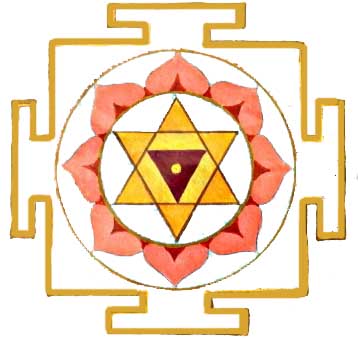
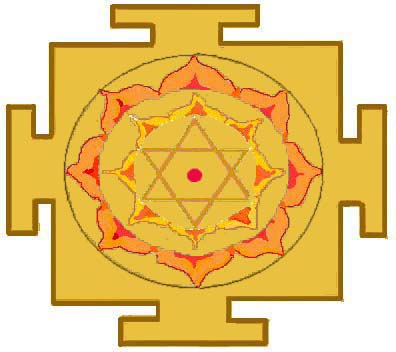
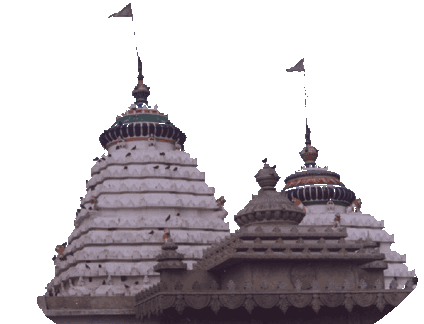
 In the background of the valley, at 12,900 feet, is the Lari Bank glacier. Beyond lie perennial snowfields. The sparkling, snow-fed Pushpawati Ganga (River of Flowers) which runs through the entire length of the six-mile long, one and a half mile wide valley. From mid-July till the end of August, the valley with its dazzling assembly of flowers plays host >to gorgeous butterflies and dainty flying creatures by day and to millions of glow worms by night. Through the sunny hours, the flowers lean over gracefully to soften the edges of tiny melt water streams which cut through the valley while beyond, against a background of dark purple clouds, the mountains stand more exquisite than ever. In the last hour, before daylight dies, the gray mist steals in over the valley from the glacier end, while the mountains around are aglow, suffused with magic light. The dusk shuts out the flowers. Then, goes the local legend, the fairy folk with millions of glowworm lamps hover over the flowers, tending them.
In the background of the valley, at 12,900 feet, is the Lari Bank glacier. Beyond lie perennial snowfields. The sparkling, snow-fed Pushpawati Ganga (River of Flowers) which runs through the entire length of the six-mile long, one and a half mile wide valley. From mid-July till the end of August, the valley with its dazzling assembly of flowers plays host >to gorgeous butterflies and dainty flying creatures by day and to millions of glow worms by night. Through the sunny hours, the flowers lean over gracefully to soften the edges of tiny melt water streams which cut through the valley while beyond, against a background of dark purple clouds, the mountains stand more exquisite than ever. In the last hour, before daylight dies, the gray mist steals in over the valley from the glacier end, while the mountains around are aglow, suffused with magic light. The dusk shuts out the flowers. Then, goes the local legend, the fairy folk with millions of glowworm lamps hover over the flowers, tending them. The major attractions in Lothal are the vast ruins of the ancient city. The most important are the sites of the ancient dockyard, the acropolis, the lower town, the bead factory, the warehouses, and the drainage system.
The major attractions in Lothal are the vast ruins of the ancient city. The most important are the sites of the ancient dockyard, the acropolis, the lower town, the bead factory, the warehouses, and the drainage system. 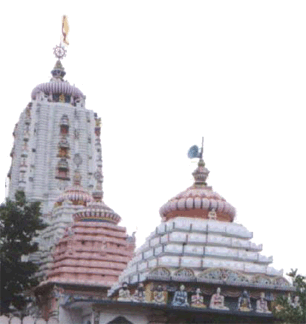
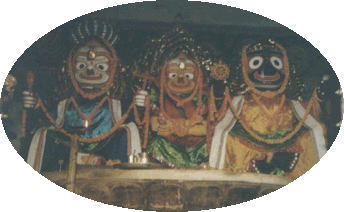
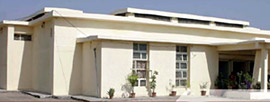 Archaeological museum is Lothal located in the Ahmedabad district of Gujarat. The museum was established in 1976 to preserve the material, which were excavated during 1950`s.The museum is divided into three galleries.
Archaeological museum is Lothal located in the Ahmedabad district of Gujarat. The museum was established in 1976 to preserve the material, which were excavated during 1950`s.The museum is divided into three galleries. 












 This small temple, 1.5 km north, is an architectural masterpiece. Rukmini is the most important of Krishna`s 16,108 wives, which might be the reason to dedicate a separate temple in her honour. The temple walls are decorated with beautiful paintings depicting her pastimes with her husband. It is believed to have been built in the 12th century.
This small temple, 1.5 km north, is an architectural masterpiece. Rukmini is the most important of Krishna`s 16,108 wives, which might be the reason to dedicate a separate temple in her honour. The temple walls are decorated with beautiful paintings depicting her pastimes with her husband. It is believed to have been built in the 12th century.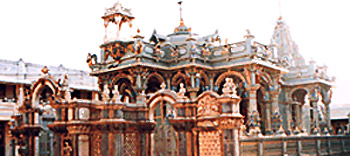 Bharuch (also known as Broach) is a district in the southern part of Gujarat. The district`s population is compared with Greater Boston. The Narmada River outlets into the Gulf of Khambat through its lands and that shipping artery gave inland access to the kingdoms and empires located in the central and northern parts of the Indian subcontinent. The city of Bharuch today serves as a large seaport city to more than a million inhabitants; it is a municipal area of Bharuch district. As a trading sea depot, the limitations of coastal shipping made it a regular terminus via several mixed trade routes of the fabled spice and silk trading between East and West, so that it came to be known by various names in history, like- Bharakuccha, Bhrigu Kaksha (the domain of Bhrigu, an ancient Indian saint), Bhroach, and of course Bhrauch. According to the 2001 census, Bharuch has a population of 148,391. It is a celebrated place for its salty peanuts.
Bharuch (also known as Broach) is a district in the southern part of Gujarat. The district`s population is compared with Greater Boston. The Narmada River outlets into the Gulf of Khambat through its lands and that shipping artery gave inland access to the kingdoms and empires located in the central and northern parts of the Indian subcontinent. The city of Bharuch today serves as a large seaport city to more than a million inhabitants; it is a municipal area of Bharuch district. As a trading sea depot, the limitations of coastal shipping made it a regular terminus via several mixed trade routes of the fabled spice and silk trading between East and West, so that it came to be known by various names in history, like- Bharakuccha, Bhrigu Kaksha (the domain of Bhrigu, an ancient Indian saint), Bhroach, and of course Bhrauch. According to the 2001 census, Bharuch has a population of 148,391. It is a celebrated place for its salty peanuts.
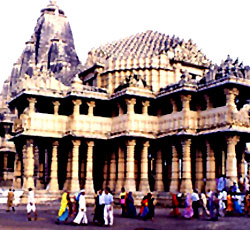

 Jamnagar district is located in Gujarat, with Jamnagar city serving as its administrative headquarters. The famous city of Dwarka is situated in this district. Jamnagar has a population of 1,904,278, out of which 43.91% are urban (2001 census) (wikipedia encyclopedia). Jamnagar city is also the municipal corporation of Jamnagar, the district. The city was build up substantially by Maharaja Kumar Shri Ranjitsinghji in the 1920s, when the district was known as Nawanagar. The district lies south to the Gulf of Kutch. Jamnagar has shot to prominence as Reliance Industries, India`s largest private company, established the world`s largest oil refinery near Moti Khavdi village. It is also home to Essar Oil, another leading oil refinery of India.
Jamnagar district is located in Gujarat, with Jamnagar city serving as its administrative headquarters. The famous city of Dwarka is situated in this district. Jamnagar has a population of 1,904,278, out of which 43.91% are urban (2001 census) (wikipedia encyclopedia). Jamnagar city is also the municipal corporation of Jamnagar, the district. The city was build up substantially by Maharaja Kumar Shri Ranjitsinghji in the 1920s, when the district was known as Nawanagar. The district lies south to the Gulf of Kutch. Jamnagar has shot to prominence as Reliance Industries, India`s largest private company, established the world`s largest oil refinery near Moti Khavdi village. It is also home to Essar Oil, another leading oil refinery of India. 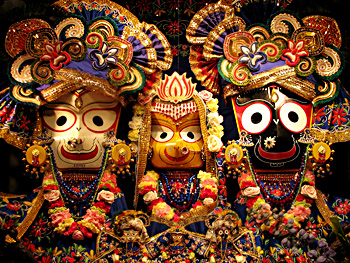 Devadasis of
Devadasis of 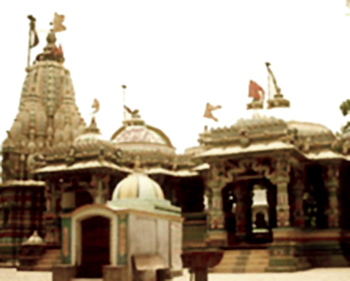 It is considered as one of the three holy `Shakti Peeths` in Gujarat. Millions of Hindu devotees throng the temple every month. Bahucharaji Temple is the famous temple of Goddess Bahucharji nestled at the Mehsanan town near the Patan district. There are 3 temples of Bahucrarji- `Adyasthan` is the original temple, while the middle temple is known as `Madhyasthan`. In the nearby town, there is a Varkhadi tree, where it is believed that the Goddess had made an appearance Herself.
It is considered as one of the three holy `Shakti Peeths` in Gujarat. Millions of Hindu devotees throng the temple every month. Bahucharaji Temple is the famous temple of Goddess Bahucharji nestled at the Mehsanan town near the Patan district. There are 3 temples of Bahucrarji- `Adyasthan` is the original temple, while the middle temple is known as `Madhyasthan`. In the nearby town, there is a Varkhadi tree, where it is believed that the Goddess had made an appearance Herself. Temples in India is one concept that perhaps is no more novel or pioneering in contemporary times. India has been blessed enough to be the home to lakhs of religious institutions since uncharted periods, times when even man did not much comprehend about existence or daily life. Archetypal temple architecture from ancient times re-described massiveness or structural epitome in rock or pure stone. Every religious faith had a story to essay; every religion had a point to establish through their impeccable builds. It also becomes quite evident that emperors and dynasties reigning in various epoch, has forever made their view etched in pages in Indian history. As such, be it in Christianity, Buddhism, Jainism, Sikhism, Hinduism, Vaishnavism or Islamic, Indian temples by religion is a broad and panoptic perception which perhaps will never cease to exist. Temple building and veneration is everlasting, as long as humanity exists to have faith in the almighty. There survives and persists temples for every religion in India.
Temples in India is one concept that perhaps is no more novel or pioneering in contemporary times. India has been blessed enough to be the home to lakhs of religious institutions since uncharted periods, times when even man did not much comprehend about existence or daily life. Archetypal temple architecture from ancient times re-described massiveness or structural epitome in rock or pure stone. Every religious faith had a story to essay; every religion had a point to establish through their impeccable builds. It also becomes quite evident that emperors and dynasties reigning in various epoch, has forever made their view etched in pages in Indian history. As such, be it in Christianity, Buddhism, Jainism, Sikhism, Hinduism, Vaishnavism or Islamic, Indian temples by religion is a broad and panoptic perception which perhaps will never cease to exist. Temple building and veneration is everlasting, as long as humanity exists to have faith in the almighty. There survives and persists temples for every religion in India.